Ladies and gentlemen, the new Hyundai Sonata. Launched in Malaysia a brisk three-quarters of a year after its world debut in Korea, the seventh-gen LF stands before us today, cutting a sharper and sleeker figure while promising roomier accommodation, more toys, and perhaps more than anything else, a more engaging experience for the driver.
Yup, Hyundai is keen to emphasise the fact that the car has been extensively developed at the Nurburgring, where the Korean carmaker recently set up a new test centre. Enhancements to its body, chassis, steering and suspension in a bid to make the Sonata fitter and more athletic than before are touted, and if you recall how the previous-gen YF drove, you’ll certainly appreciate the need for more involvement at the helm.
But driveability is far from the most important attribute with regards to this segment, at least in our market, and the Sonata is going to have to do a lot more to gain ground amidst the likes of the Toyota Camry, Honda Accord, Nissan Teana, Mazda 6 and Kia Optima. Does it deliver the necessary goods? We take the range-topping Executive on a day trip to Port Dickson and back to find out.
The swoopy, daring dress worn by the previous-gen YF was clearly an acute reaction to the snooze-worthy mundanity of the preceding NF (itself a safe retreat from the peanut-eyed EF facelift), but it also made her look a bit pudgy after a while. A pretty short while, in fact.
The LF is hopefully the resolution we’ve been waiting for. The ‘Fluidic Sculpture 2.0‘ design language, first seen on the second-gen Hyundai Genesis, endows the new Sonata with understated grace and balanced proportions. The parabolic roofline nearly meets the boot edge, affording an almost fastback profile.
There actually aren’t very many stand-out styling elements – the bumper-mounted LED DRLs (which are standard across the range), red-glow LED tail lamps, angular wing mirrors and trapezoidal tailpipe are nice touches, but hardly out of this world.
The Sonata won’t impulsively turn many heads, but for some, that’s the idea – it’s the kind of car you need to take a moment to sit and look at to fully appreciate its aesthetic equilibrium, which it has in spades. Will the LF’s styling last longer than the adventurous YF’s? Only time can tell for sure, but I’m willing to bet that it will.
A unique feature in this segment is the Smart Trunk – stand near the rear bumper with the key about your person for three seconds and the boot automatically unlatches and rises to a set height, so you don’t have to put your heavy shopping down. Once you shut the boot, it won’t open again unless you go away for about 30 seconds and return. Of course, you can disable Smart Trunk if you so wish.
Time to break out the tape measure. Although it may not look it, the new Sonata is 35 mm longer and 30 mm wider than before, while packing a wheelbase that’s 10 mm longer than the YF’s already generous 2,795 mm. The boot now swallows 510 litres – a significant 47 litres up on the YF – and of course, you can fold the 60:40-split back seats down for more.
Click to enlarge
As you can see from the dimension comparison table above, the Sonata is now the broadest in the class, and although the Mazda 6 and Peugeot 508 sedans have longer wheelbases, neither come close to the kind of back seat space you get in the Hyundai – more on that later.
So far so good, but step aboard and the Sonata takes its first hit. The interior of a D-segment sedan should exude class and perceived quality to some degree, and in this area, I feel the Korean contender plays second fiddle to some of its rivals.
The dashboard will divide opinion – the kinder camp may deem the design safe and contemporarily minimalist, but the other side will point out the monotony of grey, black and silver, as well as a considerable commonality of switchgear with other Hyundai/Kia models, which still have some way to go in terms of tactility.
My beef is with the materials employed – while fit is superb and there’s no doubt they’ll hold up to many years of use and abuse, they could look or feel better to the touch in places. The dashboard top and door pulls are soft-touch, and the door card inlays are leather-lined, which is nice, but the carbon-look dashboard trim on this Executive, non-gloss silver on the centre stack and plain grey around the window switches don’t quite do it for me.
In particular, the plain grey trim only needs the slightest brush of a damp finger to leave unsightly marks – and it has to be located on the door armrests, which are major contact areas. The gear lever, however, is elegantly-styled – featuring a neat leather gaiter, a gloss black top and a chrome ring, it resides within a slim gloss black and chrome-bordered trim piece to match. It, along with the Executive’s panoramic roof, are welcome touches.
Practicality and convenience are strong points – thanks to a foot-operated parking brake, storage spaces on the centre console are aplenty. There’s a deep tray with a swing-up lid ahead of the gear lever where you can place your devices while they’re charging through either of the two 12V sockets, as well as cubbyholes for smaller items. The twin cupholders have a separator that can be detached to give you one deep compartment. All doors have very accessible and usable pockets that contain a bottle holder each.
At the back, you’ll find utility hooks on the B-pillars and stretchy pockets on the backs of both front seats. Under the rear air-con vents is a third 12V socket – we can’t think of anything other than the Volkswagen Passat and Peugeot 508 that packs a rear 12V socket. The rear centre armrest incorporates a unique two-and-a-half cupholder design – it could probably hold two small bottles and one of those Pokka coffee cans.
On the Executive, both front perches are electrically-adjustable, with an extra lumbar function for the driver. Along with rake- and reach-adjustable steering, I quickly attained a comfortable and ideal seating position. Memory seats would’ve been nice though, as on the Kia Optima and Mazda 6.
The Android 4.4.2 KitKat-based AVN touch-screen system has to be the Sonata’s party piece, and a boon for tech buffs. Available on Elegance and Executive variants, it’s quick, easy to use and extensively customisable. Plus, there’s WiFi and the Google Play store, so you can use your phone or mobile internet device as a hotspot to download Android apps, watch YouTube videos, access emails, surf the net – the world’s your oyster. You can even use Waze while driving. See the AVN system in action here.
Now for the nitty-gritty. The 178 PS/228 Nm 2.4 litre Theta II unit is no more; only the 2.0 litre Nu MPI engine is available in Malaysia this time, developing 154 PS at 6,200 rpm and 194 Nm of torque at 4,000 rpm. The same engine in the YF facelift made 8 PS more, but at a higher 6,500 rpm, and the same amount of torque at a heady 4,800 rpm. As before, the sole gearbox is an in-house-developed six-speed auto.
Hyundai says the use of more high-tensile steel (51% versus 21% previously) in the Sonata’s construction translates to 41% greater torsional strength and 35% greater bending strength than before. The suspension’s structure and geometry have also been modified to better suit this more rigid chassis.
A flat underbody contributes to a low 0.27 drag coefficient, while the electric power steering boasts a larger data processing unit, an increased logic control cycle, a higher motor control speed and greater steering column rigidity. Also, more soundproofing, additional transmission and suspension damping, and a reinforced bulkhead are claimed to reduce NVH levels.
Appearing for the first time in a Sonata is the Drive Mode system – Eco, Normal and Sport modes influence steering effort, gearchange points and throttle response (in the case of Eco, air-con performance as well). You can tell they’re really serious about making this one a better drive. So, has it all paid off?
Well, body control is a notable strength, as a B-road blast proved. There’s little roll to speak of, and more than enough mechanical grip. Sudden camber changes and mid-corner ridges can be quite unsettling, but only briefly, and the Sonata regains its footing and resumes its trajectory with minimal drama. A driving exercise conducted on a makeshift course in the Sepang car park grounds also revealed considerable agility and an eagerness to change direction.
Taut though the chassis may be, it’s controlled through a steering that, despite its enhancements, could still do with more feel and feedback, and the added weight in Sport mode feels more virtual than anything else. Yes, dynamics are not the be-all and end-all in the D-segment, but I had to answer for Hyundai’s claims: where driver engagement is concerned, the Sonata LF is a clear cut above its predecessor, but let’s just say the Mazda 6, Honda Accord and Nissan Teana need not be worried.
Now that we’ve got that out of the way, we’ll evaluate the more relevant aspects. Thrust is par for the course – power delivery can best be described as leisurely but linear. Overtaking manoeuvres call for earlier and more urgent pedal application, or Sport mode, but otherwise, the puff is enough for most everyday situations.
Gearchanges are just as leisurely, but very smooth, and allied to high levels of engine and rolling refinement, you have a great long-distance cruiser, although wind noise could be better suppressed. For the record, the motor does 2,250 rpm at the national speed limit.
Ride comfort is above average – more sophisticated ride characteristics exist elsewhere in the segment, it has to be said. Although surface imperfections are adequately isolated from the cabin, they do not go unnoticed. Whatever they do, those Amplitude Selective Dampers could certainly do more. Not as unyielding as the Mazda 6, but not quite Nissan Teana either. However, things appear to be more supple in the back…
… where it acquits itself very well indeed. The Sonata may lack boss-friendly features such as side and rear window blinds, but he will delight in the sheer abundance of space. With the front passenger seat mirroring my own driving seat position, 175 cm-tall me had copious amounts of leg- and shoulder-room, while leaning back in my seat yielded enough headroom to clear my hair. More thigh support wouldn’t go amiss, though.
All things considered, despite the relatively short one-day jaunt, a number of things were clear about the Hyundai Sonata LF – it’s reasonably well equipped (see full prices and specs on CarBase.my), considerably more athletic than before, and that rear seat space is simply class-leading – you can easily imagine three average-sized adults sitting abreast in comfort.
Shame about that interior, but if you want to blend in (under quietly handsome styling) and stand out (amongst the sea of Japanese metal) at the same time – as contradictory as that sounds – your search may just end at the new Sonata.
Looking to sell your car? Sell it with Carro.

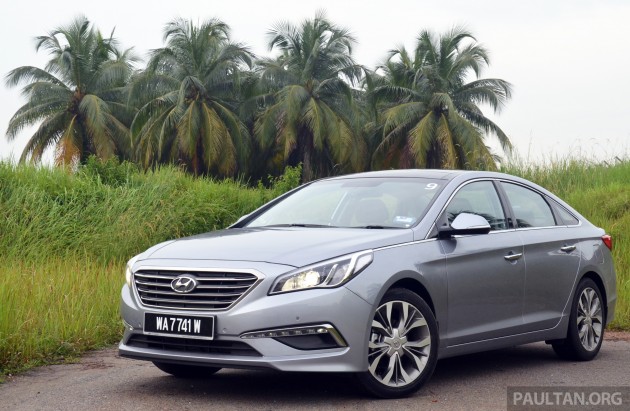
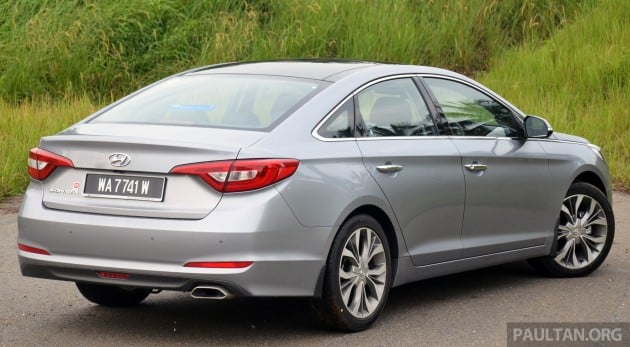



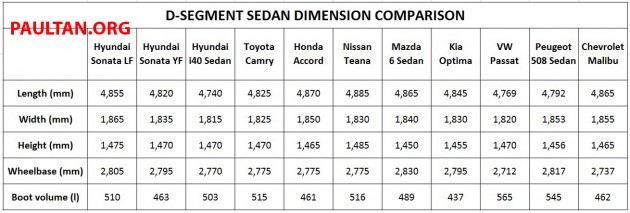






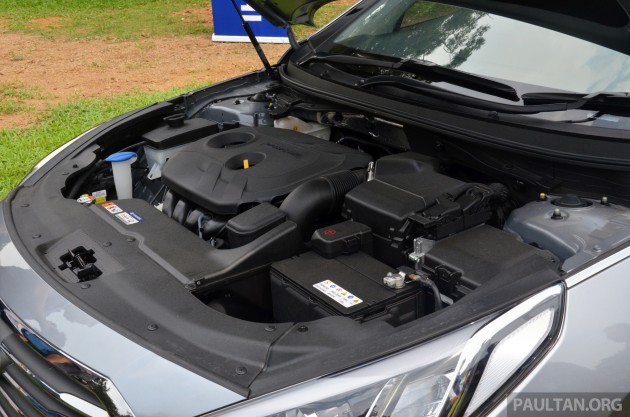
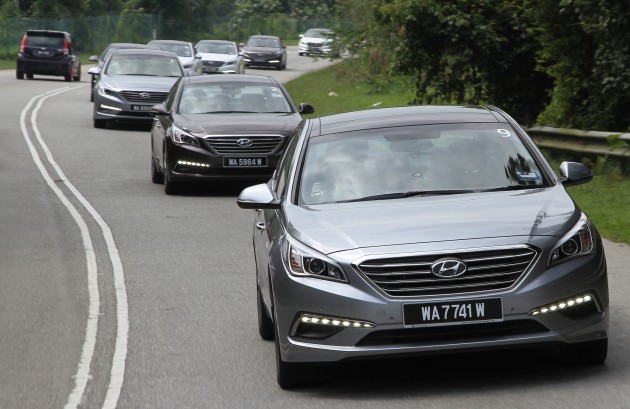
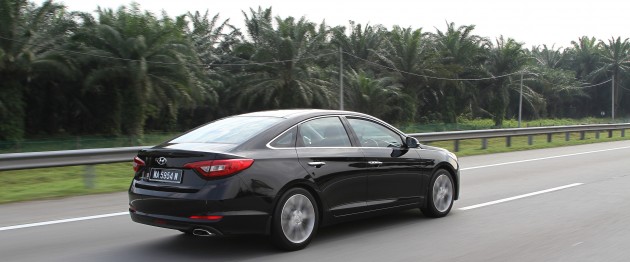


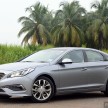
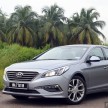
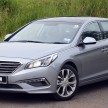
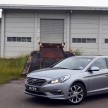
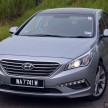
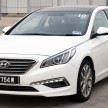
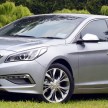
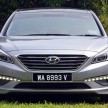
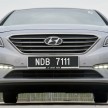
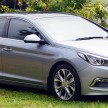
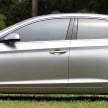
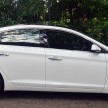
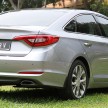
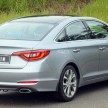
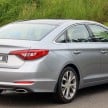
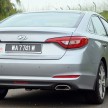
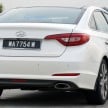
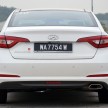
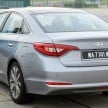
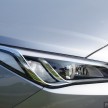
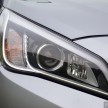
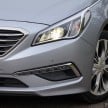
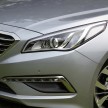
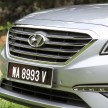
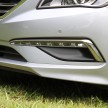
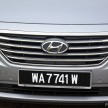
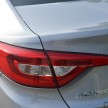
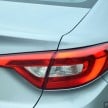
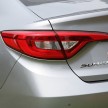
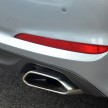
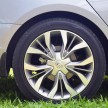
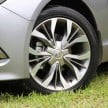
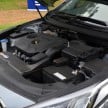
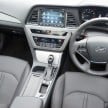
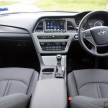
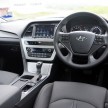
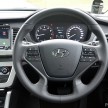
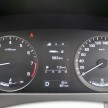
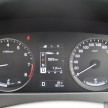
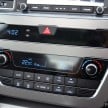
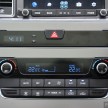
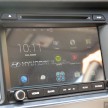
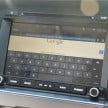
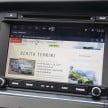
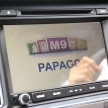
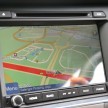
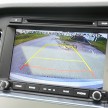
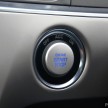
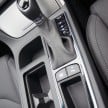
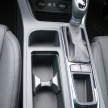
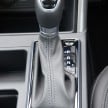
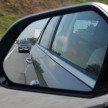

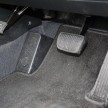
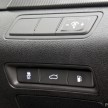
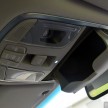
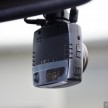
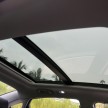
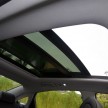
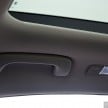
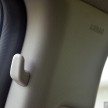

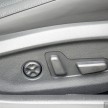
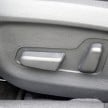
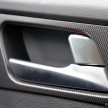
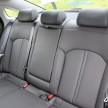
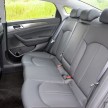
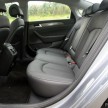

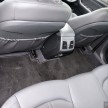

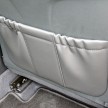
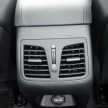
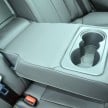
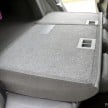
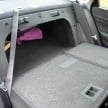
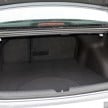
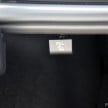
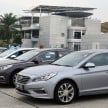
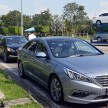
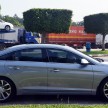
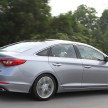
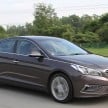
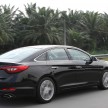



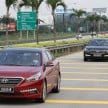
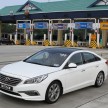

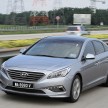
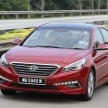
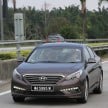

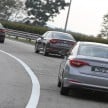
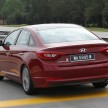
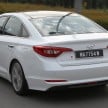
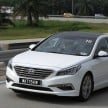
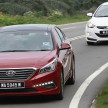

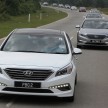

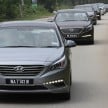


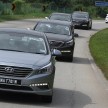
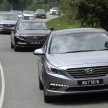

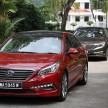
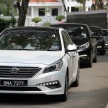
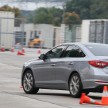
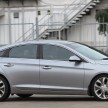
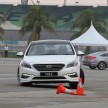
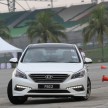
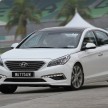
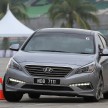
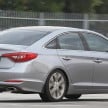
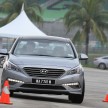
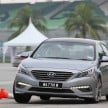
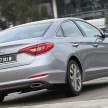
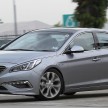
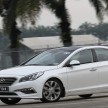
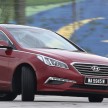

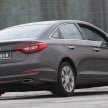










AI-generated Summary ✨
Comments on the Hyundai Sonata LF 2.0 Executive reveal mixed opinions. Many praise its design, spacious interior, and value for money, with some noting it resembles a well-tailored business suit. Others criticize the interior quality, materials, and underpowered 2.0 engine, comparing it unfavorably to competitors like Honda Accord, Mazda6, and Toyota Camry. Several commenters question Hyundai's quality and resale value, citing fragility of parts and poor second-hand RV, with some suggesting Chinese or Japanese brands as better options. A few comments reflect strong brand loyalty and support, emphasizing Hyundai’s affordability and global success. Overall, the post generates a blend of admiration for the design and space, and skepticism about long-term reliability and value retention.